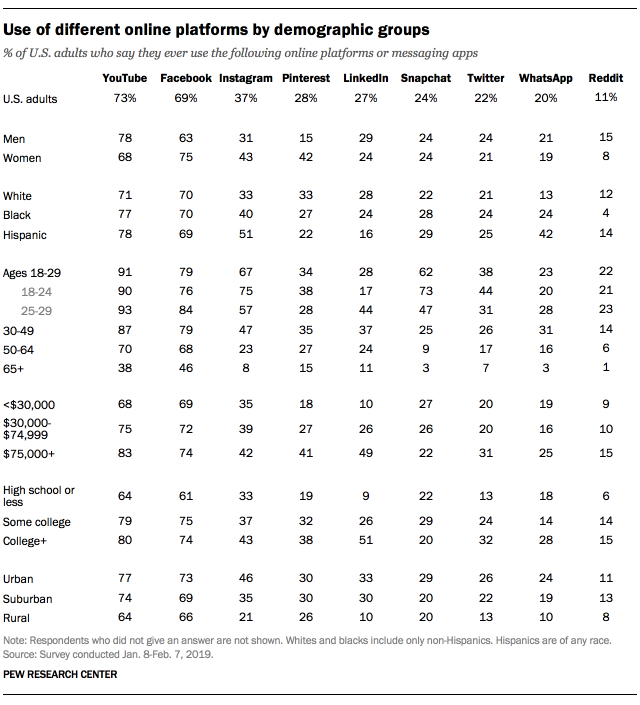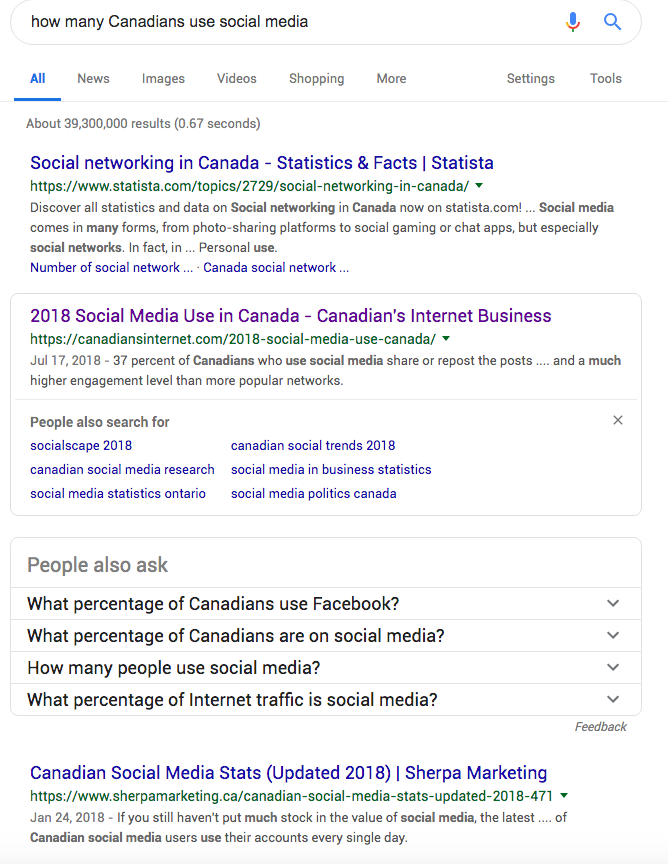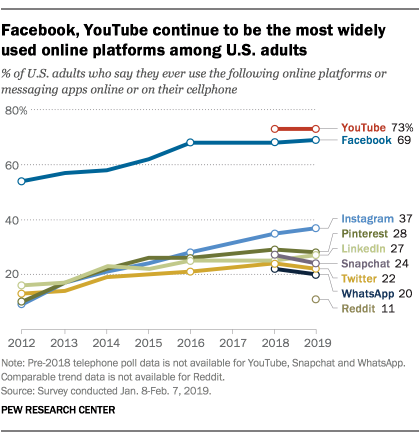In a previous article, the importance of sending a strong social signal to the Google bots was discussed. I had fully intended to move on to some of the lesser known ranking criteria used by Google, but a new Social Media demographic report came out this week that I’d like to go over instead.

Courtesy of Pixabay
In an earlier article the importance of finding the right audience, the people who want to consume your content and are actively looking for it on social media was presented. https://steemit.com/tutorial/@kay-leclerc/the-myth-magic-and-mystery-of-seo-part-2-the-marketing-mindset
But, if you’re like me, the idea of hitting every social media platform that Google pays attention to is overwhelming. It’s very easy to wind up spending your entire day doing nothing but cruising social media and dropping comments and links back to your blog or other content, often without a corresponding jump in rankings or visitors. How do we find the places the audience we need and want hangs out? It may be easier than you think.
Many companies track demographic numbers - the age, gender, income and education levels of those people on various social media platforms. Some of this research is self serving - companies who use their research to get you to buy their courses or services. However, one of the best and most renowned research companies puts out some of their research for free - Pew Research.
Let’s present some of the latest Pew Research numbers to get a better idea of where the audience we’re trying to reach actually hangs out. While the results below are only U.S. numbers, the chart shows the criteria you are looking for when you look for audience statistics.

If you are trying to find statistics for another area of the world, a simple Google search will give you the numbers you are looking for. If you want to dig deeper than just overall numbers, refine your search by age, income level, education level, gender or anything else that defines your target audience - your perfect visitor.

When you’re working with social media you don’t need to have a presence on every social media platform out there. You can start with one or two that match up to your perfect visitor and expand to include others as a test. Give them a spin and see what sort of results you get from them. Are people engaging with you better on one social channel than on others? Dump the under performers and spend your time interacting with the social sites that do have members who comment on your posts comments.
Remember - it’s all about engagement and conversation. It’s also about where you’re comfortable. If you’re having trouble feeling the love on one channel - maybe the people who hang out on that one aren’t a good fit for your content. Experiment with other channels until you have a manageable list of places to hit every day that allows you to engage with a group of your perfect visitors.
Don’t forget to check out some of the other places that aren’t in the Pew Research. Hit Medium, Quora, Reddit. Check them out, post some comments and a few articles. These channels may not be “social” in the strictest definition, but they are alternatives that can drive traffic to your content and help boost it in the rankings.
That said, there is one place for sure you need to use to help you push your content up the ladder is YouTube. Check out these Pew Research results. 73% of all US internet users hit YouTube.

Before you freak out, you can do videos that don’t have your face in them. You can do videos that are easy to put together, without expensive equipment or software. You can do videos that come together rapidly. In a future series I’ll even show you how it’s done. Video work doesn’t have to be daunting, or a great cinematic masterpiece to rank on the first page of the SERPs.
I don’t know how well Dtube and Dlive pull for search engine ranking, but there is NOTHING wrong with putting a video in more than one place. You can have the same video embedded in your blog, your Steemit article, on Dtube and linked in social media channels as well as on YouTube and you will not suffer any bad consequences. Videos in more than one place can build your audience and help you hit that high ranking you’re after in the SERPs. Indeed, you may even get TWO listings on the front page of the SERPs - one for your written content and one for your video, as videos are often included in a separate section of the first page rankings.

If all this research and experimentation sounds daunting and time consuming - it is. But remember you only have to do devote research and experiment time to it once. As time goes on, you’ll know which channels are right for you and your content and which are under-performers. You’ll be able to see which ones help you rank, and which ones don’t. Then you’ll be able to concentrate on those that work for you, and ignore the ones that don’t.
Years ago when building web sites and producing content, the saying was “Build it and they will come”. Guess what? That saying wasn’t true after Google appeared, and it isn’t true now. You can’t just build a website or toss out a bunch of content and hope people will find you.
You MUST go to where your perfect content consumer hangs out, and the only way to accomplish that is through research and experimentation.
In our next article, we’ll explore the most important single ranking factor in the Googleverse and it isn’t your key terms!
Previous SEO Articles in This Series
The Myth and Magic of SEO
The Marketing Mindset
Keywords - Part 1
Keywords - Part 2
Keywords - Part 3
Keywords - Part 4
Backlinks
OnPage Links
Why Am I Writing This Stuff and How Will It Help Steem and Steemit?
I’ve been helping clients reach good rankings and teaching SEO for more years than I care to think about. Some of you may have taken part in Discord workshops and tutorial sessions I’ve had with various groups here on Steem. Because the blockchain is based on transparency and openness, it’s time to bring that training out from the private Discord groups for everyone on Steemit.
If we want Steem and Steemit to grow, we need to be able to compete for eyeballs on the traditional net in an effective manner. Thus, we need to know and understand SEO because it is the primary mover behind getting those eyeballs on our content. By breaking down SEO into manageable chunks of information, I’m hoping everyone reading these articles will be able to improve their own rankings and turn more conventional net people into Steemians.